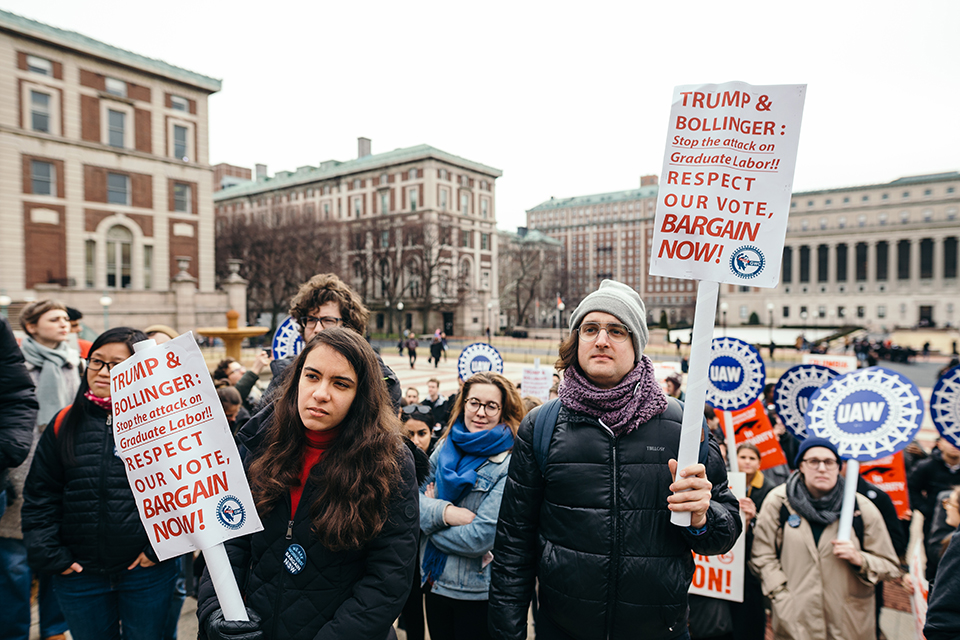The academic precariat’s precarious future

This is what happens when you turn universities into quasi-businesses:
Colleges swelled with students over the next decade and a half, with undergraduate enrollment increasing from 12.2 million in 1995 to a peak of 18.1 million in 2011. Colleges needed to hire hundreds of thousands of additional professors.
Administrators had options. They could have kept the ratio of tenured to nontenured about the same, using new tuition revenue to create more tenure-track positions.
But that’s not what happened. Instead, the number of contingent faculty more than doubled, to 1.1 million. The number of tenured and tenure-track faculty, by contrast, increased by only 9.6 percent, to 436,000.
It is not the case that there are fewer tenured college professors now than there used to be. In absolute terms, there are more. But 94 percent of the net increase in college professors hired to teach the millennial generation were contingent, meaning off the tenure track.
For colleges, this was cheaper. The halls of academe are known to be hospitable to people with radical views on power relationships between capital and labor, but colleges themselves are often merciless actors in the labor market. Many adjuncts earn only a few thousand dollars per course, with no health insurance or retirement benefits. Twenty-five percent of part-time faculty receive some form of public assistance. Some adjunct postings don’t require doctorates.
Of course the fact that the tenure track job is going the way of the Betamax hasn’t stopped graduate programs from continuing to increase the number of doctorates they grant. Between 1988 and 2018 annual doctorates issued by American universities increased by 65%, from 33,497 to 55,195. The increase wasn’t quite as sharp in the humanities (44.1%), but since students are fleeing those majors under the mistaken impression that majoring in Business will get you a different job than majoring in English (it won’t: Starbucks and Uber welcome both), the academic job situation in those fields is especially dire.
On this note I was speaking with a colleague from another department, who told me that lots of undergraduates at CU don’t declare a major until very late in their undergraduate careers, and that this is in part clearly a product of not wanting to tell their parents that they’re majoring in Gender Studies or the like — as if the economic struggles of new college graduates were a product of structural unemployment (structural unemployment occurs when jobs go unfilled because of a shortage of qualified workers), as opposed to, you know, NO REAL JOBS BEING AVAILABLE.
On a related subject, we had a training yesterday on how to conduct our classes from our climate controlled zombie-proof post-apocalypse bunkers, sorry, homes, should it become necessary to stop holding in-person classes before the end of the semester. (The University of Washington just did this).
It occurred to me that one potential effect of a COVID-19 panic may be that it will accelerate the move to “distance learning,” so that in the not-too-distant future university campuses can become inhabited solely by administrators, thus removing the annoying presence of both an increasingly contingent faculty workforce, and those pesky students who are always complaining about the inauthenticity of the cafeteria’s General Tsao’s chicken, and the serial rapists who operate for years with impunity.
It’s not dark yet, but it’s getting there.


